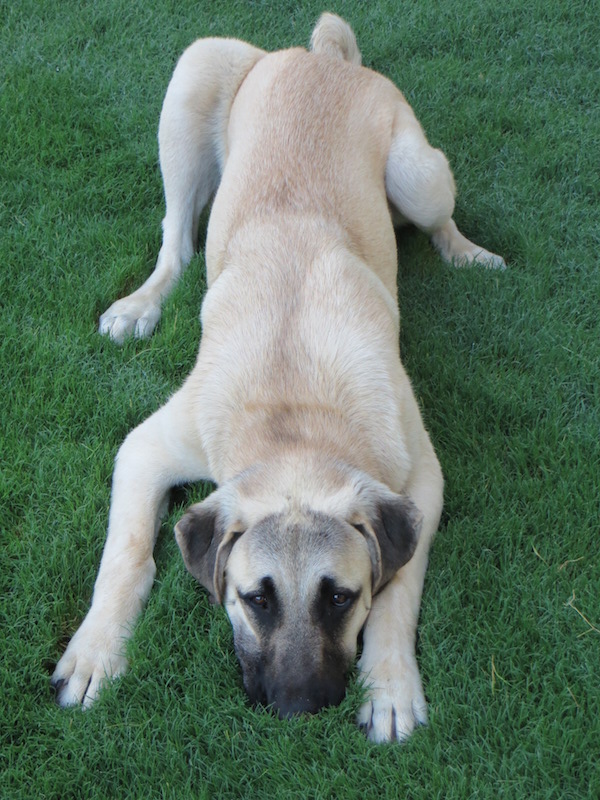
The relative isolation of the Kangal Dog’s origins, the Sivas-Kangal region of Turkey, resulted in a breed with remarkable uniformity in appearance, disposition, and behavior, predictable assets found in purebred dogs. An important characteristic of the Kangal Dog is its color which is always solid, and ranges from a light grayish brown called “dun,” to a pale fawn, dull gold, or steel gray (depending on the amount of black or gray in the outer guard hairs). Sometimes, white can appear on a Kangal, but it’s allowed only on the feet (sometimes up the forearm), chin (it must be a small spot), and chest. Some Kangals have a black mask like the one seen on “Tyro” at the left, and his coloration is often called “boz” or “karabash” which means “black head” in Turkish. All this matters in a country where the breed is considered a national treasure, and colors that are anything other than the aforementioned are considered signs that a dog is not a purebred Kangal. In fact, it’s forbidden to export a purebred Kangal Dog without official permission and paperwork.
Image of Tyro by Vicky Murry. We’re told he’s hiding behind a blade of grass.
